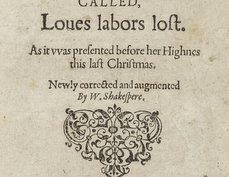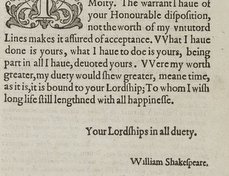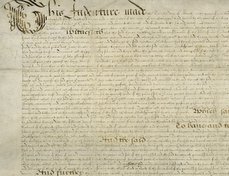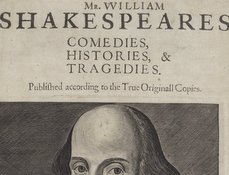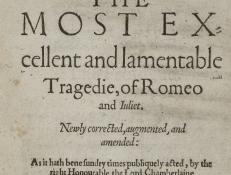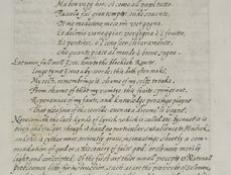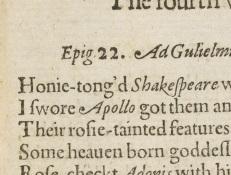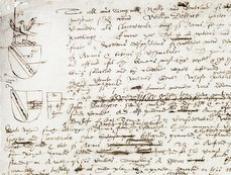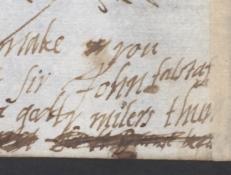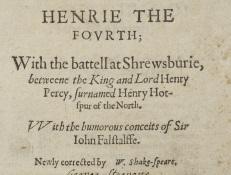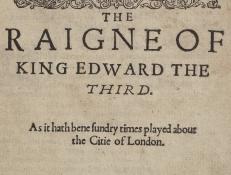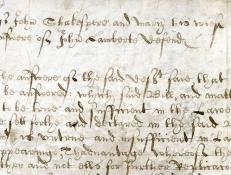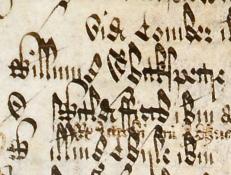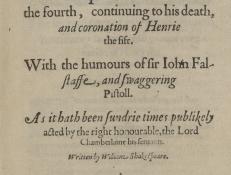Shakespeare Documented is still growing! Currently, two thirds of the descriptions and 98% of the images are available in the resource. Descriptive text will continue to be added, updated and expanded. Visit our About page to learn more about the project scope.
EXPLORE THE DOCUMENTS BY CATEGORY
SHAKESPEARE DOCUMENTED IS STILL GROWING
Descriptive content and transcriptions will continue to be added, updated and expanded. Check back for regular updates!
Filter the documents by tag(s)
1599
Customers browsing in the bookshops of London in 1599 would have found a new version of a popular play based on the well-known story of Romeo and Juliet.
ca. 1599
William Scott’s The Modell of Poesye, a treatise on poetics, includes the earliest literary criticism of Shakespeare. Although Shakespeare is not mentioned by name in the manuscript, two of his works are.
1599
John Weever’s Epigrammes in the oldest cut, and newest fashion was published in 1599. Weever began his career as an aspiring poet and literary observer at Cambridge, where he was the student of William Covell at Queen’s College.
1599
Like the two draft grants of arms from 1596, this draft exemplification of arms from 1599 is in the handwriting of William Dethick, Garter King of Arms.
July 8, 1599
SHAKESPEARE DOCUMENTED IS STILL GROWING! Descriptive content and transcriptions will continue to be added, updated and expanded. Check back for regular updates!
1599
The title page of the second edition of Henry IV Part 1 identifies William Shakespeare as the play’s author for the first time in print. The practice of including authorial attribution on title pages was becoming increasingly common at the turn of the century.
1599
This is the second edition of Edward III, printed by Simon Strafford for Cuthburt Burby in 1599.
1597- 1599
SHAKESPEARE DOCUMENTED IS STILL GROWING! Descriptive content and transcriptions will continue to be added, updated and expanded. Check back for regular updates!
October 6, 1599
Lay subsidies were a type of tax based on personal wealth. In London, the collection of subsidies was managed at the local level of ward and parish.
1600
This is the first edition of Henry IV, Part 2, printed in 1600 by Valentine Simmes for Andrew Wise and William Aspley, who entered it into the Stationers’ Register on August 23, 1600, along with Much Ado About Nothing.

